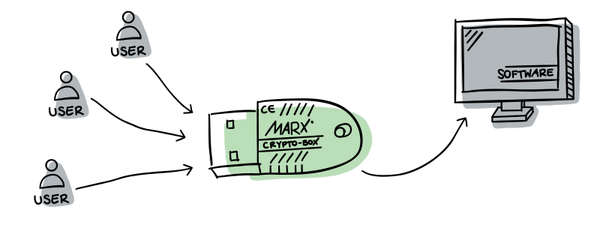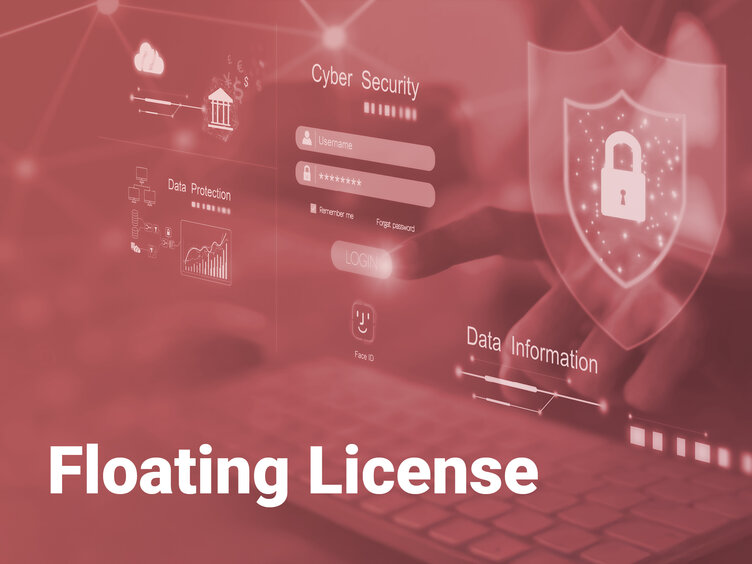Floating license (network license): Definition, benefits & future 2025
A floating license (also known as a network license or concurrent license) is a licensing model in which a limited number of software licenses are shared by several users via a network. A central license server manages availability and issues access tokens on a first-come-first-served basis.
🔑 Key feature: Licenses are not tied to devices or users, but "float" in the network and are assigned dynamically as required
Significance in the context of software protection
Why it will still be relevant in 2025
Floating licenses protect software against piracy and optimize cost control for companies. They enable:
- Controlled use: A maximum of X simultaneous accesses (e.g. 20 licenses for 50 users).
- Central compliance: License violations are automatically blocked.
- Flexible scaling: No overpayment for unused individual licenses.
Important components
1. License server
Manages the license pool capacity and communicates with client applications. Examples:
- CRYPTO-BOX® from MARX (hardware-based, offline-capable).
- Reprise License Manager (RLM) for network licenses.
2. Token management
- Session duration: Maximum inactivity time to avoid "zombie sessions".
- Borrowing function: Temporary offline use (e.g. for business trips).
3. Monitoring tools
Log workload, waiting times and conflicts - crucial for cost optimization.
Influencing factors
What shapes the application (2025)
|
Factor |
Description |
|
Usage behavior |
Shift operations require fewer licenses than single-user models |
|
Scalability |
Cloud license servers reduce local IT infrastructure costs |
|
Costs |
Floating licenses are 3-5× more expensive than named-user licenses |
|
Security |
Hardware tokens (e.g. CRYPTO-BOX®) vs. purely software-based solutions |
Advantages for companies & users
For companies
- Cost efficiency: 40% lower expenditure with fluctuating usage.
- Centralized management: Uniform updates, no manual device binding.
- Scalability: license pool expansion without reinstallation.
For users
- Flexibility: Access from any network device (PC, laptop, terminal server).
- No waiting times: With hybrid models (fixed + floating).
Practical example 2025
Shift operation at print shops
A company with 13 workstations (8 day shift, 5 night shift) uses 8 floating licenses for graphics software.
- Cost savings: Instead of 13 individual licenses (€ 500 each) = € 6,500 → 8 floating licenses (€ 1,750 each) = € 14,000 + annual maintenance (€ 1,400).
- ROI: Amortized after 2 years .
Future & relevance 2025
Trends in software protection
- Cloud floating: Licensing via AWS/Azure, no more on-premise servers.
- AI-supported predictions: Automatic license pool adjustment based on usage data.
- Hybrid models: Combination of fixed licenses (for power users) and floating licenses (for occasional users).
Conclusion
Floating licenses will remain relevant in 2025, as they effectively protect software from misuse while enabling flexible, cost-efficient use. New trends such as cloud floating and AI-supported license optimization will further strengthen their importance.
Sources
Author:
Steffen Kätsch
Senior Support Engineer / Consultant License Management
Education: FH Jena
Expertise: License Management Software Licensing Software Protection IT Compliance Digital Rights Management

